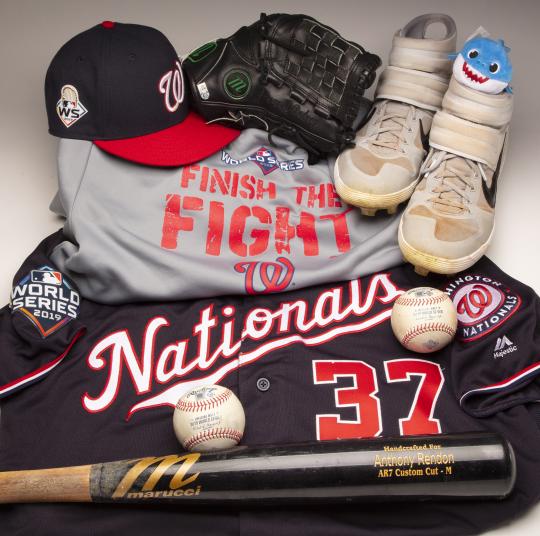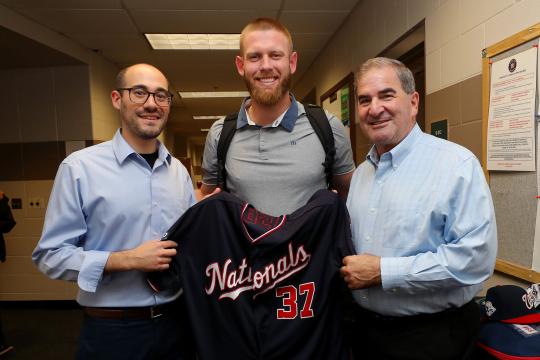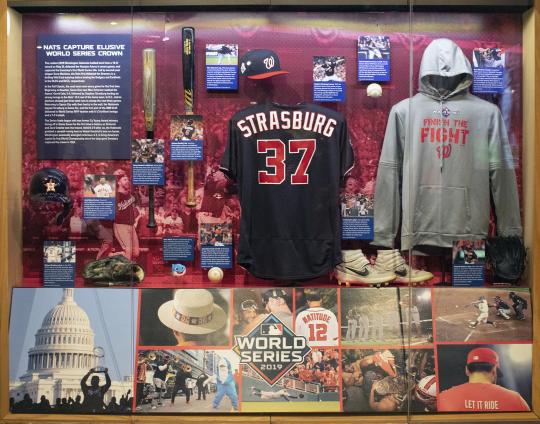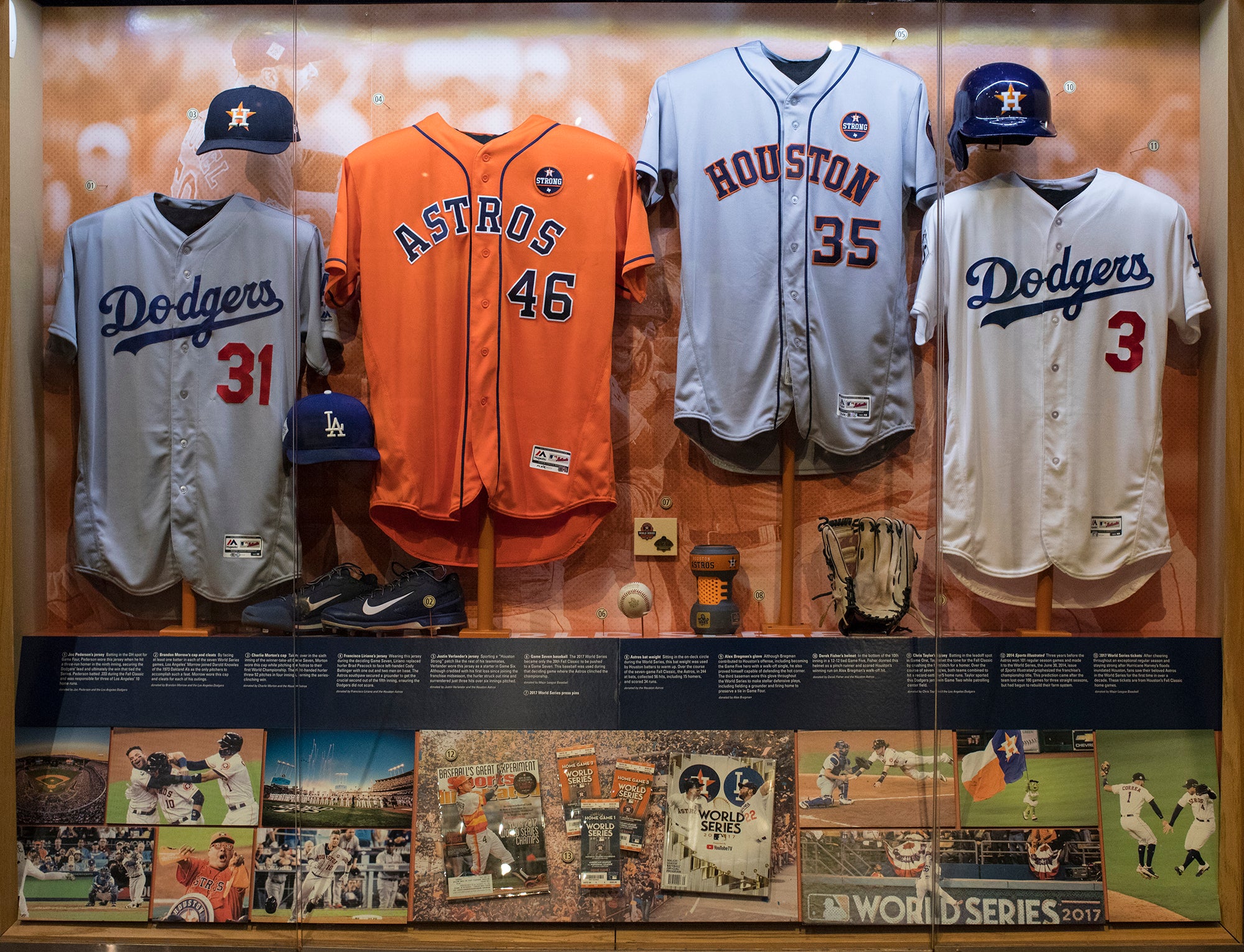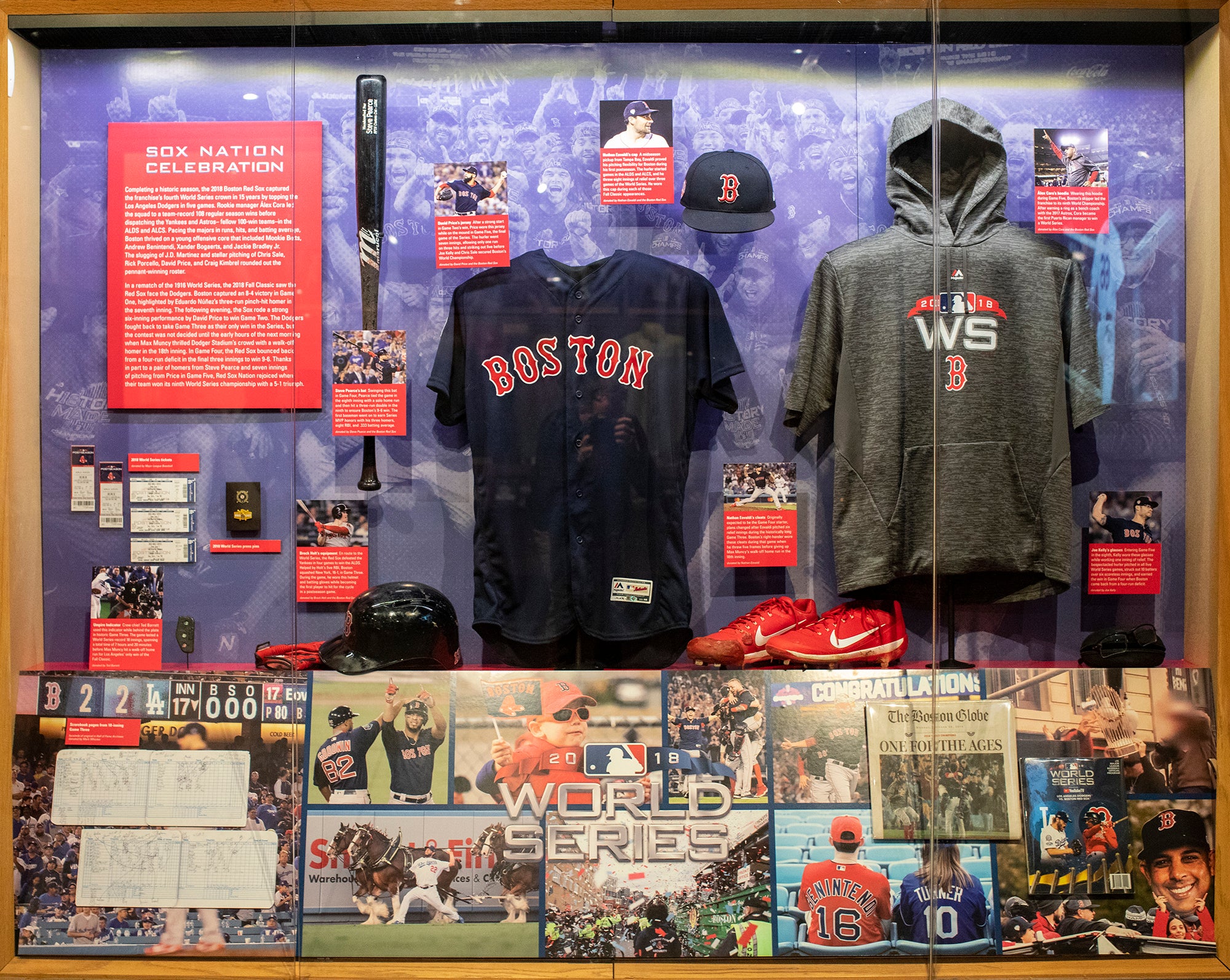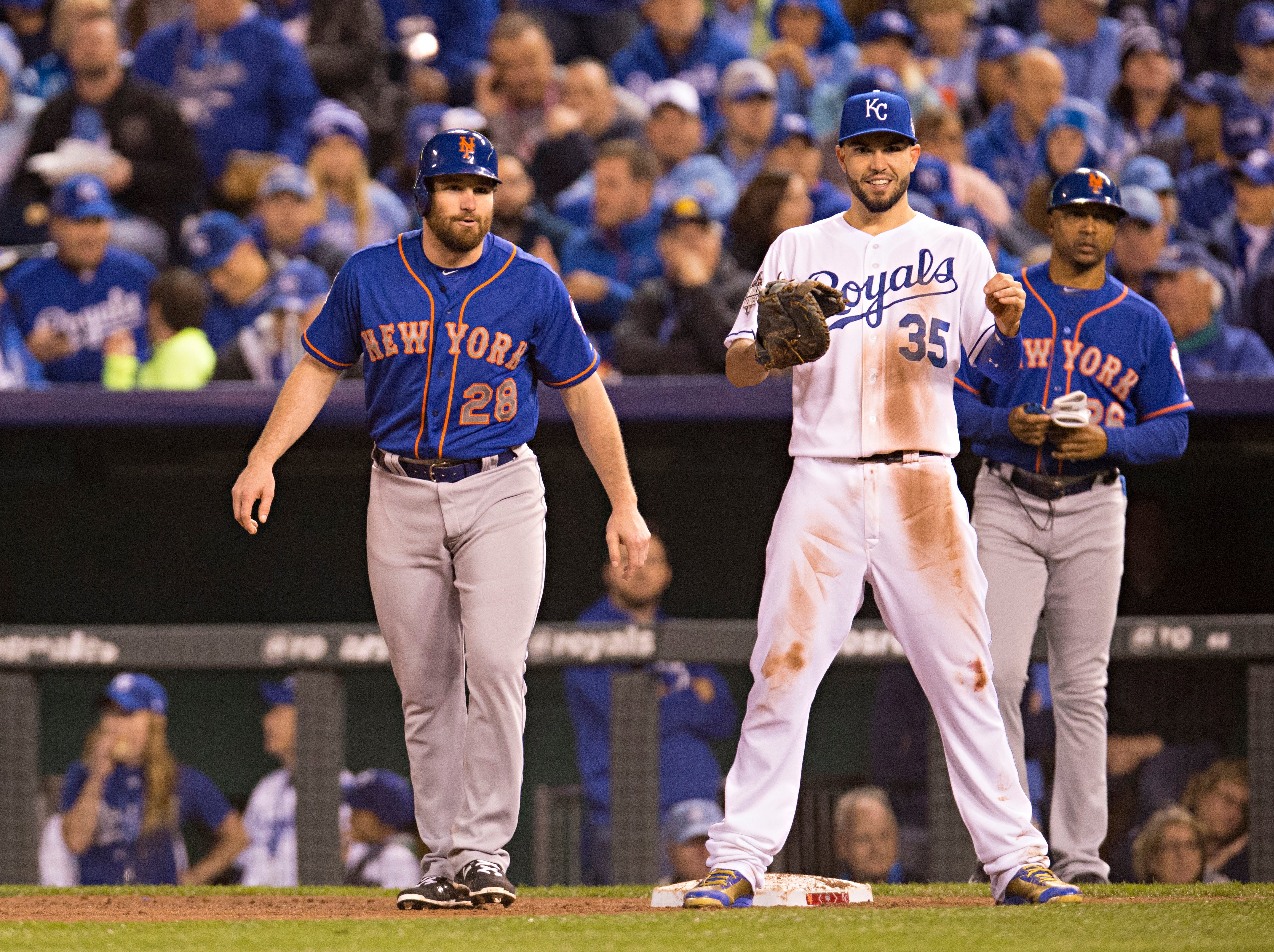Story of incredible Nationals season told in Autumn Glory
The 2019 World Series was truly a series of firsts.
It marked the first time the Washington Nationals franchise made it to the World Series, the first time the franchise won the World Series and the first time every game of a seven-game series was won by the visiting team.
Official Hall of Fame Apparel
Proceeds from online store purchases help support our mission to preserve baseball history. Thank you!
Hall of Fame Membership
There is no simpler, and more essential, way to demonstrate your support than to sign on as a Museum Member.
Add to that, the first time – in all likelihood – a children’s song helped to spur a team on to victory.
The Museum’s newest edition of Autumn Glory – the annual exhibit celebrating the postseason and the World Series victors – tells the story of this unprecedented Fall Classic.
Isabelle Minasian was the digital content specialist at the National Baseball Hall of Fame and Museum

